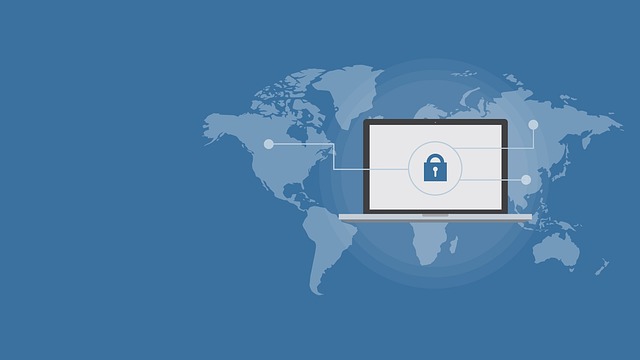Current underwater environmental protection efforts need to enter the modern age. If you’re like most people, you agree using artificial intelligence is the best way to do it. After all, algorithms are one of the most promising technologies in the digital age.
Why Should You Use AI for Environmental Protection?
Underwater environmental protection efforts are more critical than you realize. Did you know over 50% of the water in the United States is too polluted for drinking, washing, fishing or swimming? You can see why marine professionals and activists urgently want solutions.
Artificial intelligence is quickly catching on as the leading solution for underwater environmental protection efforts because it is incredibly efficient, cost-effective and precise. It’s the ideal choice since it can seamlessly integrate with Internet of Things sensors and cameras.
“Over 50% of the water in the United States is too polluted for drinking, washing, fishing or swimming.”
AI adoption is becoming increasingly popular because business opportunities drive research and development. Already, as many as 60% of companies have sustainability strategies. Naturally, they need technological solutions to accelerate progress.
Although AI is relatively new, widespread research and development has revealed its many use cases. You’ve gone from seeing proof-of-concepts to off-the-shelf solutions in only a few years. Now, this technology’s contributions to underwater environmental protection efforts are clear.
Common Environmental Protection Challenges
Currently, more work must be done for conservation and restoration efforts to be impactful enough. Unfortunately, most environmental protection agencies lack adequate resources. Maintaining a large enough staff and adopting the latest technology gets expensive quickly.
“Algorithms can protect endangered species by monitoring their locations, behaviors and habitats.”
While policymakers have established many protections for underwater ecosystems, there aren’t enough. Illegal and unregulated practices like overfishing, dumping, chemical drainage and habitat disruption are common.
One of the most common challenges is the sheer amount of data collected. It would take months — even years — to clean and process everything, whether tracking sea turtle migration patterns or recording whale calls. Consequently, most protection efforts take ages.
AI’s Role in Underwater Environmental Protection Efforts
AI-powered IoT devices like thermometers, sensors and surveillance systems are standard. Algorithms are incredibly versatile, so they have numerous applications. While hydrophones use them to analyze audio recordings, cameras use them for image recognition.
Applications for AI in Underwater Environmental Protection
Many use cases for AI-led underwater environmental protection exist.
Marine Life Conservation
Algorithms can protect endangered species by monitoring their locations, behaviors and habitats. If your AI-powered underwater cameras alert you to anything concerning during analysis, you can reprioritize marine preservation and ecosystem restoration.
Resource Allocation
Underwater environmental protection efforts require numerous resources. Environmental protection agencies generally need more than they get. Fortunately, AI can simultaneously analyze historical and real-time data to improve resource allocation.
Regulatory Compliance
While many environmental protections exist, enforcing them is often challenging. However, you can use AI-powered technology to remotely track overfishing, illegal boating activity and irresponsible underwater construction, making them far less likely to occur.
Oil spills are another pain point you’re probably familiar with. More than 44 incidents have occurred since 1969, with each one dumping over 420,000 gallons into the ocean. Thankfully, AI-powered predictive analytics can forecast them, preventing more from happening.
Ocean Monitoring
Harmful and disruptive underwater events like algal blooms or coral bleaching can happen naturally or because of humanity. Since they’re common, there are many massive data sets on them. You can use AI to predict future incidents and monitor existing ones.
Waterway Decontamination
You’re probably aware of underwater pollution — it occurs because of oil spills, drainage pipes and poor wastewater management. AI can track and block these sources, decontaminating waterways. It can also minimize hazardous runoff by monitoring chemical usage near coasts.
AI’s Contribution to Underwater Environmental Protection
Automation and adaptation are the two most powerful features AI possesses. Unlike similar technologies, it can work independently in real time — saving you months, if not years, of analysis and research.
If you leverage machine learning models, you won’t have to worry about your technology becoming outdated. Algorithms can constantly provide up-to-date, authentic information, making your underwater environmental protection efforts more impactful.
Early warnings are another significant contribution. AI can send you a real-time alert when an oil spill occurs or an algal bloom is inevitable. This way, you can prepare to respond well in advance, minimizing the damage.
“Algorithms can constantly provide up-to-date, authentic information, making your underwater environmental protection efforts more impactful.”
While AI’s contributions may seem hypothetical, they’re already visible. For instance, an AI-powered acoustic monitoring tool called INSTINCT promises to save decades of research time by automating audio analysis, dramatically improving whale conservation efforts.
Even government entities have realized the power of algorithms. A 2023 Coast Guard report says AI adoption is imminent because humans are ineffective compared to it. Soon, this technology will help preserve, protect and restore underwater habitats globally.
The Future of AI in Underwater Preservation and Restoration
As more people use AI to collect data on water pollution, marine species and habitat destruction, policymakers will take an interest. This technology will likely prompt widespread efforts from governments worldwide, dramatically improving preservation and restoration efforts.



